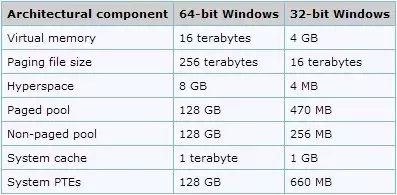In the modern world of technology, developing and improving computer architecture is always a hot topic. One of the most frequently asked questions is why, to this day, no one has created a 128-bit operating system. To answer this question, we need a clear understanding of computer architecture, as well as an awareness of the limitations and potential of current technology.
First, you need to understand what a ‘bit’ is. A bit is the smallest unit of data that a computer can process and store. You can learn more about bits here. Currently, most computers use operating systems with either a 32-bit or 64-bit architecture.
Why 128-bit?
In theory, a 128-bit architecture offers the ability to process data and perform mathematically intensive operations with much higher efficiency than the current 64-bit architecture. This is beneficial for applications requiring high precision and speed, such as graphics, cryptography, and complex system modeling.
Issues with 32-bit and 64-bit Architectures
The 32-bit architecture has a significant limitation: it can only manage 4 GB of memory, reducing data processing efficiency on systems with large memory capacities. However, the 64-bit architecture, capable of handling up to 18 exabytes of memory, has far exceeded the current and anticipated near-future needs.
For each bit you add to the architecture, you double the number of available addresses. These addresses are essentially the number of combinations that can be formed. For example:
1 bit = 0 or 1, a total of 2 combinations
2 bits = 00, 01, 10, or 11, a total of 4 combinations
3 bits = 000, 001, 010, 011, 100, 101, 110, or 111, a total of 8 combinations
Therefore, transitioning from 32 bits (a total of 4,294,967,296 combinations) to 64 bits (a total of 18,446,744,073,709,551,616 combinations) was already more than necessary.
128-bit architecture: 340,282,366,920,938,463,463,374,607,431,768,211,456
compared to 64 bits: 18,446,744,073,709,551,616
The Unnecessity of 128-bit
The transition from 32-bit to 64-bit has already provided sufficient address space and performance for modern applications, making the development of a 128-bit operating system seem unnecessary. Theoretically, the number of addresses that a 128-bit architecture can provide is a colossal figure, far beyond the practical needs of any application today or in the near future.
Potential Applications of 128-bit
While the current application of 128-bit architecture in operating systems seems unnecessary, the relentless advancement of technology and the growing need for data processing could eventually find a place for 128-bit architecture. Especially in fields like artificial intelligence, physical simulations, and scientific modeling, where precision and the ability to process vast amounts of data are crucial.
Conclusion
At present, creating a 128-bit operating system appears to be an effort that exceeds real-world needs, akin to “creating a nuclear weapon to kill a fly.” However, the potential of 128-bit architecture in the future, as the technology world continues to evolve and demands higher precision and performance, cannot be denied. Transitioning to a 128-bit architecture, if it happens, will be a significant leap forward, opening new possibilities for the technology world.

